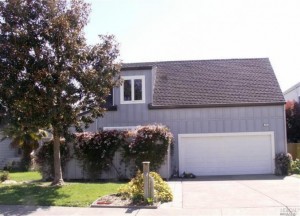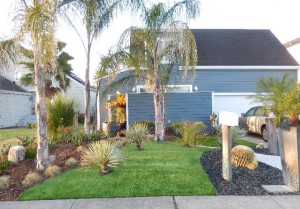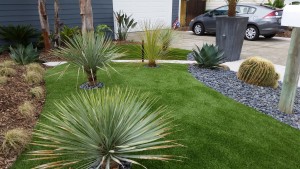The grass is always greener on the other side…
Other side of what? Other side of the country, mostly.
Your tradition white picket fence, green lawn, Partridge family style home was not meant for California, Traditional sod lawns are more appropriate in areas that receive summer rainfall, i.e. the east coast.
Don’t let this winter’s rain fool you, and do heed the Governor’s warnings: We are having a Drought, with a capital D. So how can we save our landscape, something we have invested way too much time, love, energy, and hard earned dollars into, to allow to turn to dust?
You can have a wonderful, vibrant and artistic landscape that will wow your friends, and have you saying drought, what drought?
The first premise is that you really should sacrifice some, if not all, of your lawn. Picture your lawn three feet deep in water. That’s how much it takes to keep it alive from the end of the rainy season to the beginning of the next. Here are some alternatives
The Before – nothing but lawn and some ugly vines
No more lawn. This example shows three alternatives to lawn. Pebbles, artificial turf, and mulch.
Let’s take a closer look at each:
The pebbles and boulder highlight the sculptural quality of the cactus;
The artificial turf provides a soft counterpoint to the sculptural, spiky desert plants, while providing an inviting walking surface;
The mulched planting bed is alive with interesting, drought tolerant plants that draw humming birds to them like a magnet.
These are just a few ideas to show that, at least in the garden, there is life beyond water.





